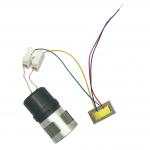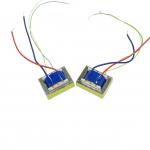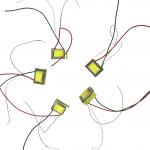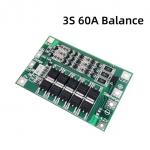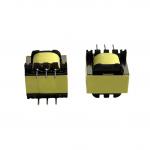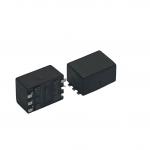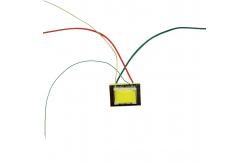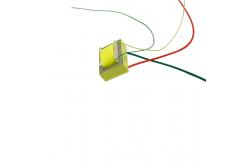Lightweight EI19 1:4 Metal Dynamic Microphone Audio MIC Transformer
Permalloy1.Product DescriptionThe Microphone Audio Transformer is an essential component in audio
systems, bridging the gap between microphones and other audio
devices. It operates based on the principle of electromagnetic induction,
where an audio signal from the microphone, in the form of an
electrical current, passes through the primary winding. This creates a fluctuating magnetic field within the transformer's
core, which then induces a corresponding electrical signal in the
secondary winding. This process is crucial for impedance matching. Microphones often have different impedance levels compared to the
devices they are connected to, such as audio mixers or amplifiers. The transformer adjusts the impedance, ensuring maximum power
transfer and minimizing signal loss. Its compact and well - designed structure, typically with a high -
quality magnetic core, enables efficient magnetic coupling between
the windings. This results in faithful reproduction of the audio signal,
maintaining the integrity of the original sound captured by the
microphone. In applications like professional recording studios, live sound
reinforcement systems, and even in some high - end communication
devices, the Microphone Audio Transformer plays a vital role. In recording studios, it helps capture the nuances of vocals and
musical instruments accurately, providing a clean and clear audio
signal for further processing. In live sound setups, it ensures that the microphone signal can be
effectively amplified and distributed to speakers, reaching the
audience with high - quality sound. 2.Performance Characteristics | Characteristics and Advantages | Description | | Impedance Matching | MIC transformers are designed to match the impedance of the
microphone, which typically has a relatively high impedance, to the
lower - impedance input of audio equipment like amplifiers or
mixers. This impedance matching maximizes the transfer of
electrical power from the microphone to the connected device. As a
result, it ensures that the audio signal is efficiently
transmitted, reducing signal loss and distortion. For example, in a
professional recording studio, a high - impedance condenser
microphone can be properly connected to a low - impedance audio
interface through a MIC transformer, allowing for clear and
accurate sound capture. | | Signal Amplification | These transformers can increase the voltage level of the weak audio
signal generated by the microphone. By stepping up the voltage, the
MIC transformer boosts the signal strength, making it more suitable
for further processing in the audio chain. This signal
amplification is crucial, especially for microphones that produce
very low - level signals, such as dynamic microphones used in live
performances. The amplified signal can then be better processed by
subsequent audio equipment, enhancing the overall sound quality. | | Noise Reduction | MIC transformers play a significant role in reducing noise
interference in the audio signal. They can reject common - mode
noise, which is noise that appears equally on both the positive and
negative wires of the microphone cable. Through the principle of
electromagnetic induction, the transformer cancels out this common
- mode noise, leaving only the desired audio signal. This results
in a cleaner and more noise - free audio output. In a noisy
environment like a live concert venue, a MIC transformer can
effectively filter out background electrical noise, ensuring that
the vocals or instrument sounds are clearly heard. | | Electrical Isolation | One of the important features of MIC transformers is electrical
isolation. They provide a physical separation between the
microphone and the rest of the audio circuit, preventing electrical
current from flowing directly between them. This isolation helps
protect the audio equipment from potential damage caused by ground
loops, voltage spikes, or other electrical problems. For instance,
in a large - scale audio installation, where multiple microphones
are connected to a central mixer, MIC transformers can isolate each
microphone, reducing the risk of equipment failure due to
electrical issues and ensuring the reliable operation of the entire
audio system. | | Frequency Response | MIC transformers are engineered to have a flat and wide frequency
response. This means that they can accurately reproduce audio
signals across a broad range of frequencies, from the lowest bass
notes to the highest treble frequencies. A flat frequency response
ensures that the original sound from the microphone is faithfully
represented in the output signal, without any significant frequency
- related coloration. In applications such as music recording,
where accurate reproduction of all frequencies is essential, a MIC
transformer with a good frequency response can help capture the
full richness and detail of the performance. |
|
